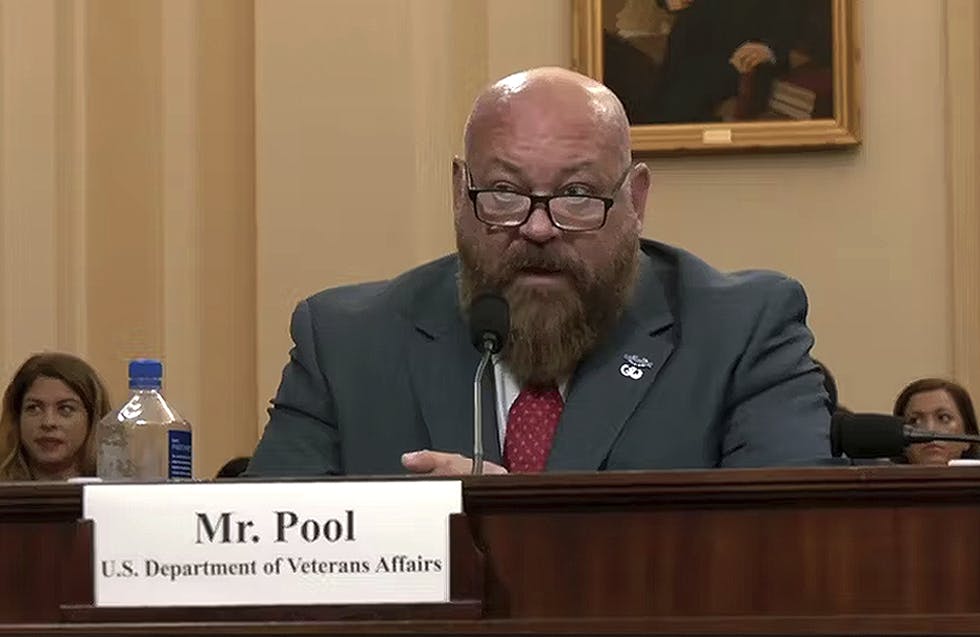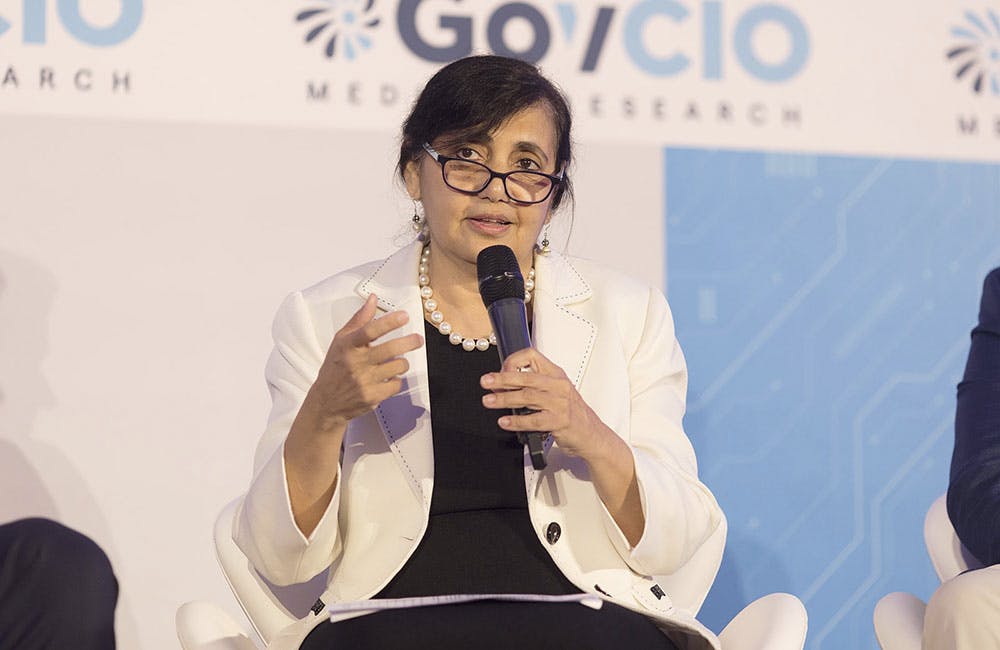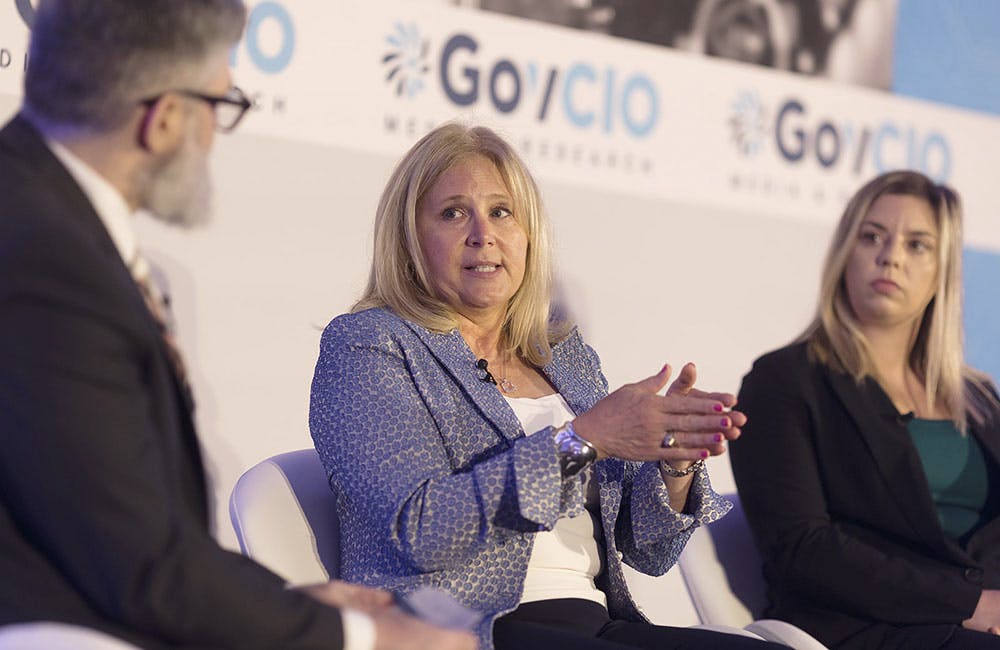Data Initiatives at DHS Helped Deliver Vaccines to Frontline Workers
Data sharing and interoperability are key for data quality and governance.

The Department of Homeland Security is prioritizing artificial intelligence, machine learning and data sharing to support data analytics for mission delivery — an effort that enabled the department to roll out COVID-19 vaccines rapidly to frontline workers earlier this year.
Mike Horton, the newly appointed chief data officer at DHS, said the department’s contribution to the Vaccinate Our Workforce (VOW) program was possible because of the department’s data analytics and interoperability initiatives.
“When vaccinations were a big priority for the administration, especially frontline workforce, we found ourselves in a situation where we could impact one portion of that: provide data on the people who got vaccinated,” Horton said during an ATARC webinar earlier this month. “We sorted all that data and found it came from a lot of different places. It helped us understand how disparate the data is in different components. … That coalition of data and managing that data on a daily basis to update those lists and get our employees vaccinated as quickly and efficiently as we could, working with multiple agencies across government, really highlighted how good data, (when) shared, can serve the people.”
DHS’ immigration data domain is another success story for data analytics and interoperability.
“That immigration data domain for us at DHS is the most secure and productive of the domains we have,” Horton said. “Getting that story told, and helping people understand that a culture of sharing data and pushing data up to provide product and decision-making for leadership, helps the mission.”
Damian Kostiuk, chief of the data analytics division at U.S. Citizenship and Immigration Services, said while the agency is deploying AI and machine learning for data analytics, internal culture is the top priority for quality and governance of that data.
“Trying to get trust and culture change inside your organization really bolsters all of that,” he said during the ATARC webinar. “One of the key things when we get to automation, you’re really talking about going from a group of people who are producing widgets tens per hour, to thousands per hour (which create a bigger likelihood of making a mistake). In order to buffer that, you need to have extremely fast recognition of data-quality error. It goes to the public trust component of what you’re doing.”
Data sharing and strong interoperability standards are also critical for improved data quality and governance, he added.
“If you’ve got a thousand mistakes that can be made very quickly because your data quality goes really bad, if you have different siloed data sets all over the place, how hard is that going to be to correct the data quickly to go back to your operations? It’s really difficult,” he said. “You want to have a single space, and that’s part of that culture change.”
This is a carousel with manually rotating slides. Use Next and Previous buttons to navigate or jump to a slide with the slide dots
-

VA CIO Targets Modern IT and Smarter Workforce Alignment
Agency leaders told lawmakers they are focused on trimming legacy systems and restructuring its workforce to streamline operations.
3m read -

Pentagon's $200M AI Contracts Signal Broader Effort to Transform Talent
The Army is leveraging Silicon Valley, reservist programs and new hiring strategies to integrate critical digital skills in its ranks.
5m read -

AI Foundations Driving Government Efficiency
Federal agencies are modernizing systems, managing risk and building trust to scale responsible AI and drive government efficiency.
43m watch -

Inside DOD’s Push to Grow the Cyber Workforce Through Academia
Diba Hadi gives her first interview since becoming principal director of the DOD’s Cyber Academic Engagement Office.
15m listen -

Agencies Tackle Infrastructure Challenges to Drive AI Adoption
Federal agencies are rethinking data strategies and IT modernization to drive mission impact and operational efficiency as new presidential directives guide next steps.
5m read Partner Content -

Generative AI Demands Federal Workforce Readiness, Officials Say
NASA and DOI outline new generative AI use cases and stress that successful AI adoption depends on strong change management.
6m read -

The Next AI Wave Requires Stronger Cyber Defenses, Data Management
IT officials warn of new vulnerabilities posed by AI as agencies continue to leverage the tech to boost operational efficiency.
5m read -

Federal CIOs Push for ROI-Focused Modernization to Advance Mission Goals
CIOs focus on return on investment, data governance and application modernization to drive mission outcomes as agencies adopt new tech tools.
4m read -

Fed Efficiency Drive Includes Code-Sharing Law, Metahumans
By reusing existing code instead of rewriting it, agencies could dramatically cut costs under the soon-to-be-enacted SHARE IT Act.
5m read -

Agencies Push Data-Driven Acquisition Reforms to Boost Efficiency
New initiatives aim to increase visibility of agency spending, improve data quality and create avenues to deploy solutions across government.
5m read -

Data Transparency Essential to Government Reform, Rep. Sessions Says
Co-Chair of the Congressional DOGE Caucus Rep. Pete Sessions calls for data sharing and partnerships to reduce waste and improve efficiency.
5m read -

DOD Turns to Skills-Based Hiring to Build Next-Gen Cyber Workforce
Mark Gorak discusses DOD’s efforts to build a diverse cyber workforce, including skills-based hiring and partnerships with over 480 schools.
20m listen
















